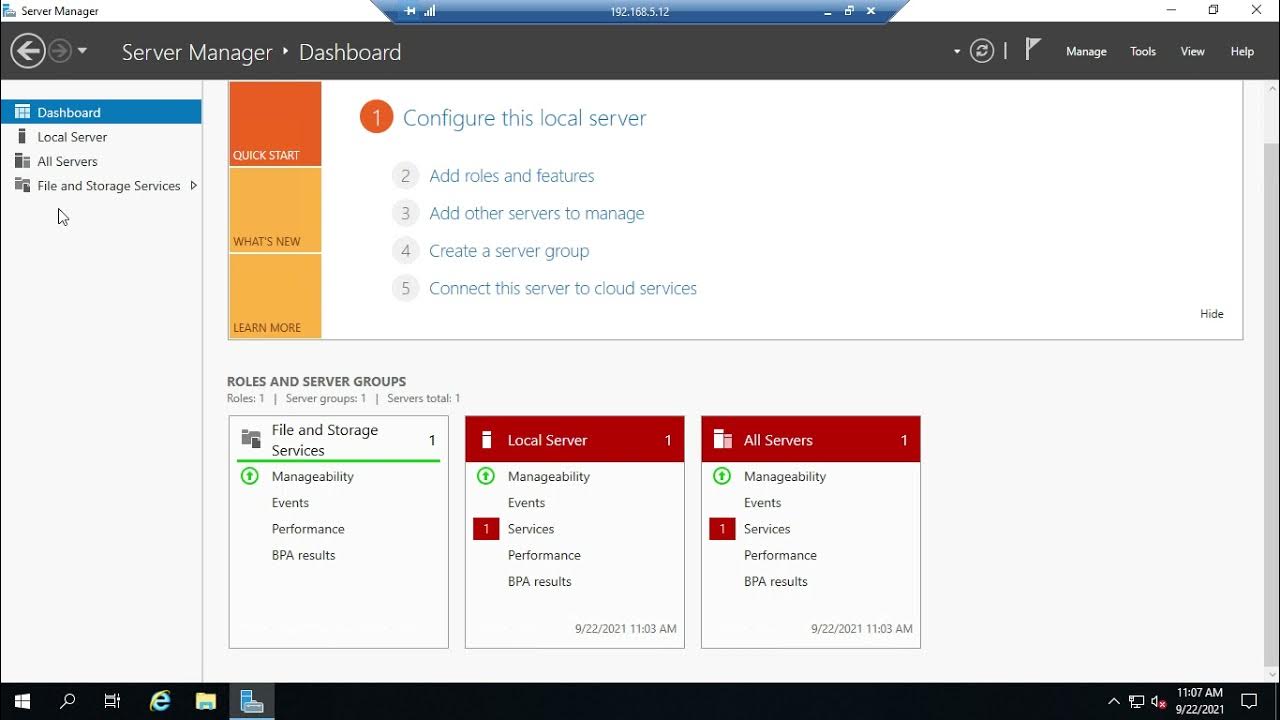New Features in Windows Server 2012
Summary
TLDRThis video from ITFreeTraining explores the key new features of Windows Server 2012, including the flexible user interface that allows switching between Server Core and full GUI, enhanced Server Core role support, and a redesigned Server Manager for easier multi-server management. It highlights Storage Spaces for efficient disk management, the self-healing Resilient File System (ReFS), and improvements in SMB 3.0 for better network sharing. Additionally, it covers advancements in DirectAccess and Hyper-V, including live migration and resource metering, showcasing Windows Server 2012 as a powerful upgrade for IT infrastructure.
Takeaways
- 😀 Windows Server 2012 allows administrators to switch between Server Core and the full GUI interface anytime, offering flexibility not available in previous versions.
- 😀 Server Core now supports 12 out of 19 server roles, including SQL Server, increasing its utility for administrators.
- 😀 The Server Manager interface has been significantly revamped to manage multiple servers, streamlining administration tasks.
- 😀 Storage Spaces enable the combination of multiple hard disks into one storage pool, supporting redundancy and thin provisioning for efficient storage management.
- 😀 The Resilient File System (ReFS) offers self-healing capabilities to enhance data integrity but lacks support for booting and certain features like disk quotas.
- 😀 SMB 3.0 introduces block access features and high availability, allowing for seamless failover and hosting virtual machines on file shares.
- 😀 DirectAccess is improved to eliminate the need for IPv6, providing a more transparent and simplified connection for remote users.
- 😀 Hyper-V enhancements include better virtual machine migration, resource metering for monitoring usage, and replication for backup solutions.
- 😀 RemoteFX allows rendering of 3D graphics on older clients without requiring high-end hardware, reducing the need for additional purchases.
- 😀 Overall, the features in Windows Server 2012 enhance usability, performance, and management, making it a compelling upgrade for IT infrastructures.
Q & A
What are the main objectives of the open source software discussed in the video?
-The main objectives include promoting collaboration among developers, ensuring software freedom, and facilitating community-driven development.
What is the significance of licensing in open source projects?
-Licensing is crucial as it defines how software can be used, modified, and shared, thereby protecting the rights of both developers and users.
How do major tech establishments contribute to the open source community?
-Major tech establishments contribute by providing resources, sponsoring open source projects, and engaging in collaborations that enhance software innovation.
What challenges do open source projects face regarding sustainability?
-Challenges include funding, maintaining developer engagement, and managing community dynamics, which can affect project longevity and stability.
Can you explain the concept of 'forking' in open source software?
-Forking refers to creating a separate copy of an existing software project to modify and develop it independently, often used to innovate or resolve issues within the original project.
What role does community play in the success of open source projects?
-The community plays a vital role by providing feedback, contributing code, and helping with documentation and support, which drives project improvement and adoption.
What are some examples of successful open source projects mentioned in the video?
-Examples include Linux, Apache, and Mozilla Firefox, which have thrived due to their strong community support and collaborative nature.
How does open source software impact innovation in technology?
-Open source software fosters innovation by allowing developers to build upon existing work, share ideas freely, and reduce redundancy in software development.
What is the importance of documentation in open source projects?
-Documentation is essential as it helps users understand how to use the software, guides developers in contributing, and ensures knowledge transfer within the community.
How do open source projects handle security concerns?
-Open source projects often rely on community scrutiny and collaborative efforts to identify and fix vulnerabilities quickly, which can lead to more secure software overall.
Outlines

This section is available to paid users only. Please upgrade to access this part.
Upgrade NowMindmap

This section is available to paid users only. Please upgrade to access this part.
Upgrade NowKeywords

This section is available to paid users only. Please upgrade to access this part.
Upgrade NowHighlights

This section is available to paid users only. Please upgrade to access this part.
Upgrade NowTranscripts

This section is available to paid users only. Please upgrade to access this part.
Upgrade Now5.0 / 5 (0 votes)





